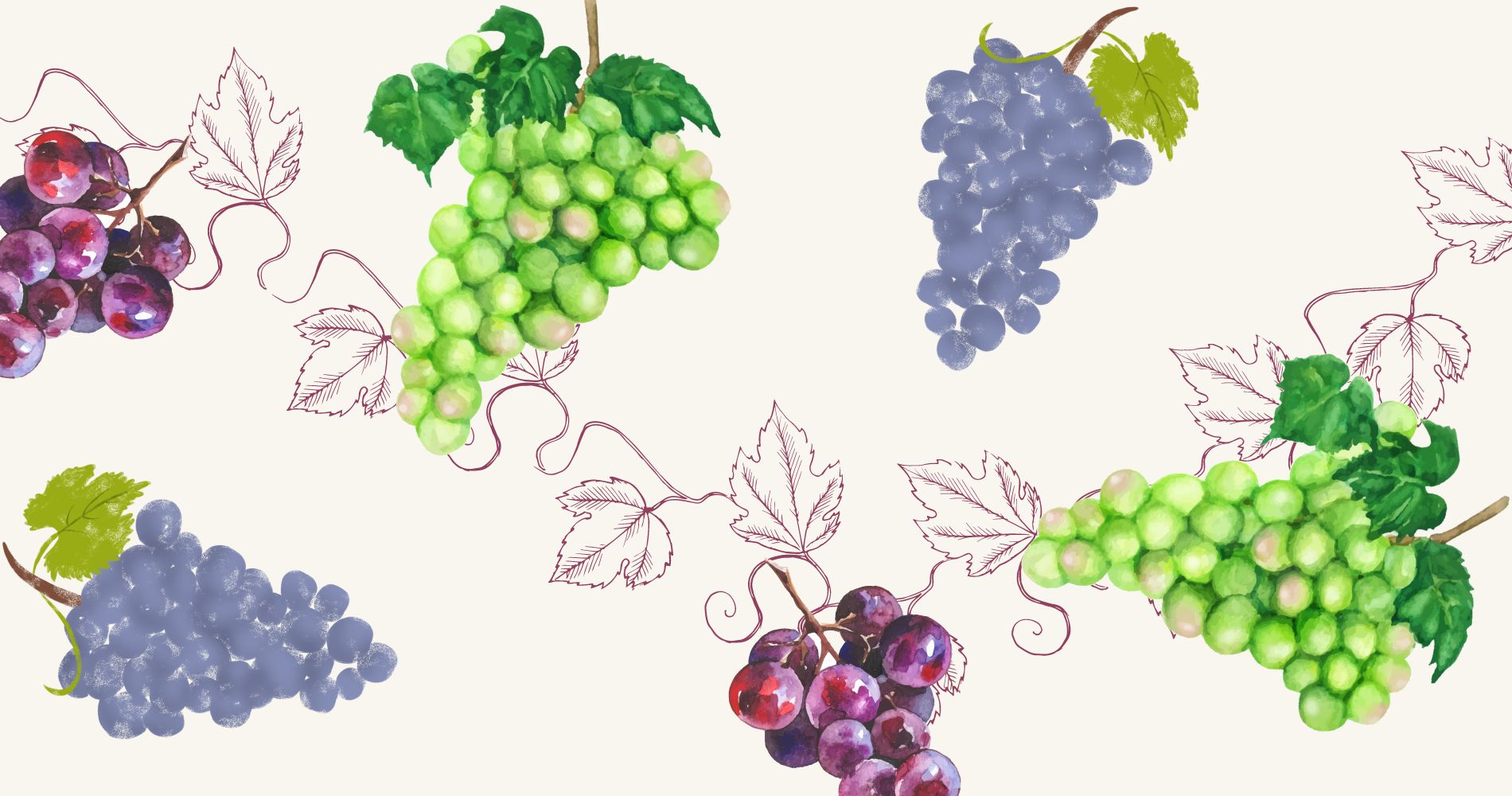
Achieve Grapeness and Concord the Day: Top 4 Mid-Atlantic Grown Grapes
September 04, 2024 by 4P Foods
Fresh, locally-grown grapes are incomparable to those that have traveled a long distance. The grapes grown by farmers in the Mid-Atlantic are unique to our region. We are in awe of the grapeness of the local varieties that are plucked from vines mid-September through October.
All of the grape varieties listed here are known as “slip skin” grapes, because the skin easily separates from the fruit. Most of these grapes contain seeds, and the seeds can be eaten. If you choose, you can swallow the seeds whole or chew them. Dealing with the seeds is worth it for the flavor these grapes have.
WELLNESS BOOST: These grapes are all high in antioxidants!
Try the top four grape varieties harvested in the Mid-Atlantic this autumn and concord the day. They can be eaten raw or used to make jam, juice, and wine.
1. Concord Grapes
If you ever had a glass of Welch’s grape juice, then you are familiar with the taste of a Concord grape. Locally-sourced Concord grapes turn the nostalgia and sweet, delicious flavor up to ten! They also pack a nutritional punch. Their deep purple skin is high in antioxidants.
Wenger Grape Farm, the farm we source our Concord grapes from, recommends eating the grapes by holding a single berry in your fingers, squeezing the berry firmly in your mouth to get all of the juice, and swallowing the pulp whole, including the seeds. Then, chew the skin for maximum nutritional content.
Concord grapes were first developed in 1849 in Concord, Massachusetts by farmer Ephraim Wales Bull. They are grown on their own root stock, unlike many European varieties, which means this variety of grape isn’t affected by an insect pest called grape phylloxera. The resistance to this particular pest makes Concord grapes much easier to grow and manage in the Mid-Atlantic region.
2. Niagara Grapes
These grapes are sweet and “foxy”-a word coined by one wine reviewer, Paul Bulas, to describe the "high-toned, candied muskiness" of Niagara Grapes. If they taste familiar, it may be because Niagara grapes are the source of most white grape juice in the U.S.! They are also an excellent source of vitamins C, K, B1 and B6, as well as minerals like potassium and manganese.
Named for the Niagara county of New York, Niagara grapes are a “cousin” to the Concord grapes. They were developed in 1868 by two New York botanists, C.L. Hoag and B. W. Clark, who made Niagara grapes by crossing Concord grapes with Cassady grapes. The result is a grape that has a thick slip skin like Concord grapes, but with a translucent and glossy green flesh.
3. Muscadine Grapes
Muscadine grapes have a rich and tart taste that is unlike any other created by the sweet and musky flavor of the fruit combined with the slightly tart flavor of the skin. The skin can be removed and separated from the flesh. Inside these large grapes, you will find five seeds, which can be chewed, swallowed, or spit out when you are enjoying Muscadine grapes. They are also popular for making wine, jams, and jellies.
Muscadine grapes are just as nutritious as they are delicious. They have high amounts of calcium, phosphorus, polyphenols, potassium and also contain antioxidants and vitamin C.
Muscadine grapes are native to North America and can be found growing wild. They have adapted to most pests in the Mid-Atlantic region and are relatively easy to grow.
4. Razzmatazz Grapes
A special variety of muscadine grapes developed in North Carolina, Razzmatazz grapes took 20 years to cultivate and are truly a breakthrough in the world of grapes! Razzmatazz grapes are crisp and sweet with a thin skin and no seeds like a table grape, but they are also naturally pest resistant like native muscadines. Being a special variety of muscadines means Razzmatazz grapes require significantly fewer pesticides than grapes grown in California.
Just as nutritious as traditional muscadines, Razzmatazz grapes are high in calcium, phosphorus, polyphenols, potassium and also contain antioxidants and vitamin C. These grapes are great for snacking, back to school lunches, charcuterie boards, fruit salad, and any recipe that requires a seedless grape.
Preserving Peak-season flavor is our (Concord Grape) Jam
Now is peak season for our delicious, local Concord, Niagara, and Muscadine grapes, and their beloved season is short. If you give them a try and fall in love with the grapeness, never fear, we also have Concord Grape Jam in stock from Wenger Grape Farm. Making jam is the perfect way to preserve that grape flavor and enjoy it all year-round. This Concord grape jam is great on toast or a PB&J sandwich or you can try our Almond Butter & Grape Jam Pita.